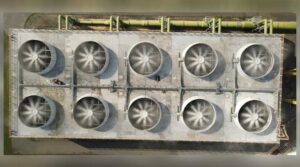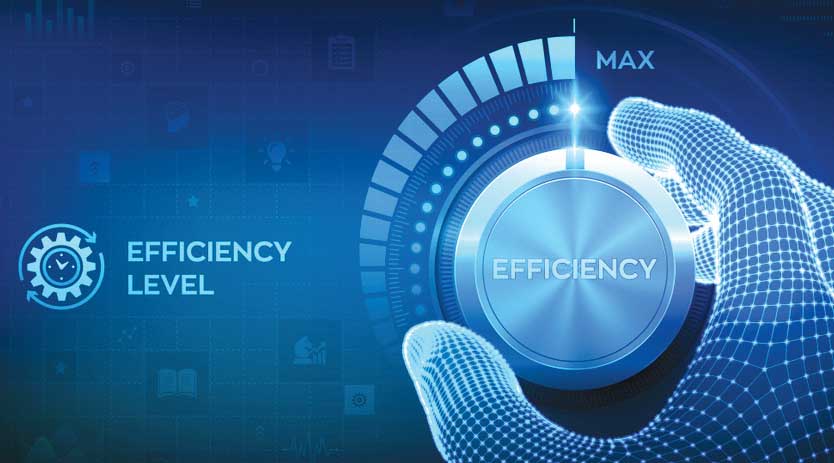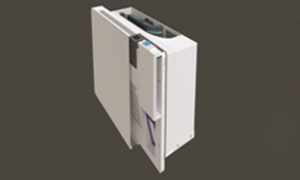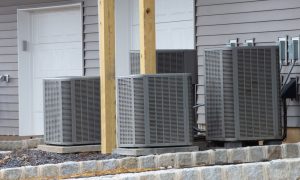Industry experts share views on sustainable cooling, training in harmony with skill India advancements in cooling, thermal comfort and enhancing energy efficiency, as ICAP implies smart cooling plans inducting new technologies aimed at industry growth.
Cooling requirements are an essential part of economic growth. It is required across different economic sectors like residential and commercial buildings, cold- chain, refrigeration, transport and industries. India is the first country to develop a cooling action plan based on energy efficiency and thermal comfort. The India Cooling Action Plan (ICAP) is a long-term integrated vision towards cooling across sectors encompassing reduction of cooling demand, refrigerant transition, enhancement energy efficiency and better technology options by 2037-38 through synergies with the Government.
Cooling is also linked to human health and productivity. The nature of cooling and its use in the development of the economy is a developmental necessity. ICAP has placed India on the international radar and garnered significant interest in supporting global momentum for creating National Cooling Action Plans.
ICAP lists out actions which may help reduce the cooling demand. The goals seek to reduce cooling demand across sectors by 20 to 25 percent by 2037-38, refrigerant demand by 25 to 30 percent, and cooling energy requirements by 25 to 40 percent. ICAP also seeks to train and certify 100,000 service technicians by 2022–23, synergising with the Skill India Mission. These actions will have significant climate benefits.
ICAP and cold chain
According to the India Cooling Action Plan, growth is inevitable. Energy efficiency enhancement and reducing waste are relevant in this context. The environmental factors are also included in its ambit to support ICAP. It is a need of the hour that the country’s cold chain requirements will grow. But one has to consider that growth must be commensurate with sustainability, with green targets in mind.
Focussing on the agricultural segment, Mr. Pankaj Mehta, Managing Director, Carrier Transicold, India and South Asia, said, “The important factor is creating smart cold storages or cold chains to help reduce food waste in the agricultural sector. The industry is also concerned about its net carbon footprint. Using energy efficient refrigerants is one good way to reduce the carbon footprint in the systems.” Consequently, growth in the cold chain will continue, with a strong emphasis on responsibility and sustainability.
Sustainability and technological advancement
Cold chain role is immense in the entire cold chain; hence, better technologies must be considered for smart cooling aligning with ICAP. According to the information from the National Cold Chain Development (NCCD) team, the country’s cold storage quantities, capacities and area of cold storage are nearing saturation. Of course, new technologies can replace existing cold storage so that the total amount remains the same, but the old cold storage gets replaced.
Mr. R. Anish Simha, Senior General Manager and Head of RINAC India Limited, shares his viewpoint: “The pre-cooling technology and reefer technology for farm produce should adhere to the guidelines’ systematic procedure. Once pre-cooled, fruits should not be exposed to uncontrolled temperatures. It must be pre-cooled after being picked up from the farm within six hours.”
He adds, “The country currently has cold storage and enough portable storage, but there is an impending need to expand reefer container fleet. It is also important to avoid taking shortcuts while transporting the material, as this may expose the product to various other prevailing weather conditions and temperatures.” However, the humidity changes are not controlled mainly. Medicines, for example, are subject to humidity control and require constant monitoring. The conditions are read continuously and monitored from when it leaves the cold storage until it reaches the end receiver. However, they are tamper-proof.
Increasing cold storage capacity would propel the HVAC equipment and refrigerants market. The scope also provides a room to find refrigerant that is less expensive and has a lower global warming potential. As a result, the refrigerant recovery kits can be used to begin changing them. One should also be equipped and trained to use the refrigerant so that ICAP guidelines can be met as quickly as possible. So, cold storage is a continuous process that must adhere to the bare minimum standards of guidelines. This will help save both produce and energy, adds Mr. Anish.

New opportunities and portable cold chain solution
The ideal temperature can help products have a longer life. In the case of refrigerated containers as a solution, many innovations are taking place, usually replicating the existing cold room facility. When there is an option of building a cold room, it can take years to get constructed. This portable solution which comes in handy, can be easily installed. The portable cold chain comes as a ready-made solution, requiring the blasting of pads. Throwing the light on the latest innovation offered in the market, Ms. Pushpalata Shetty, DGM, Sales, Crystal Logistics Cool chain Ltd., says, “Apart from portable solutions, there is an option of the ultra-freezers solution instead of building a cold room. This solution can be used to maintain a temperature to minus 70 degree, minus 60 degree, based on requirements.” She views the scenario as the modern portable storage units can be tracked remotely. They have the right temperature fit for perishables such as fruit, vegetable, dairy products etc.
When there is a requirement for a vaccine that needs to be stored at a particular temperature, this option can be installed immediately. The cold room implies where one is looking for an area for more than 1000 sq. ft. building. This type of cold room will take much more time, whereas having this facility will ease the installation and the time process. It can be done quickly.
Blast freezers also have a bigger capacity. The standby is a normal reefer container that works with one refrigeration machine. In the case of a reefer box, provision should be there for multiple or dual compressors; since the cargo is very sensitive and expensive, no one can afford to lose it. So, it is advisable to have a dual compressor. If one compressor goes off, there is a standby facility available. So, these options are available if one is looking for a portable cooling solution. Another important aspect is training the service technicians in the cold chain segment. The question is how to train the workforce in the cold chain sector to enable the targets.
Training Manpower in Cold Chain to attain ICAP and Net Zero Cooling
Given the importance of a skilled and trained workforce, Mr. Pankaj thinks, “The skill development is going to be an essential part of a sustainable cold chain that we are trying to build here. Several initiatives are happening with the National Centre of Cold Chain Developments, with the OEMs and equipment manufacturers.” There are universities which have included a cold chain as a course. The engineers can take up that course for various levels of engineers, operators, and maintenance guys. It is available even for drivers of reefer trucks who need to be trained. Hence, skill development would be a vital part of the India cooling action plan to build a healthy, safe, sustainable, and intelligent cold chain.

Adding to it, Mr. Vishnu Sasidharan, Vice President, Climate Technologies, Pluss Advanced Technologies, remarked, as per the latest study published by the World economic forum, almost 40 percent of the world population is in the hot tropics. About 2.8 billion people live in the hottest part of the world. India’s population is 1.4 billion, which is 50 percent of that. It says only 8 percent of these countries have access to air conditioners. So, when this increases to 99 percent to 100 percent (like the developed countries), how fast are we equipped in terms of our efficiencies? The 5 percent to 10 percent increase in efficiencies catch up to the demand because the India Cooling Action Plan has some ambitious goals of reducing the demand and the requirement.
Mr. Vishnu explains further, “As consumers, we are utilising more and more energy through air conditioners. The core fundamental definition of sustainability is meeting the needs of the present and not compromising on future generations’ ability to use these rights. Many at the Indian Society of Heating Refrigeration Engineers have acknowledged and confessed that what we need to do is to achieve this goal. It can be broken down in a stepped manner to disseminate to the industry members, like National Centre for Cold Chain Development for cold chain, Indian Society of Refrigeration Engineers for HVAC etc., as these are very closely knit industries.”
Hence, many diverse options are available for sustainability and innovation in the cold chain sector. The industry is consciously heading towards one common goal: building a healthy, safe, and sustainable cold chain for India.
Cookie Consent
We use cookies to personalize your experience. By continuing to visit this website you agree to our Terms & Conditions, Privacy Policy and Cookie Policy.















